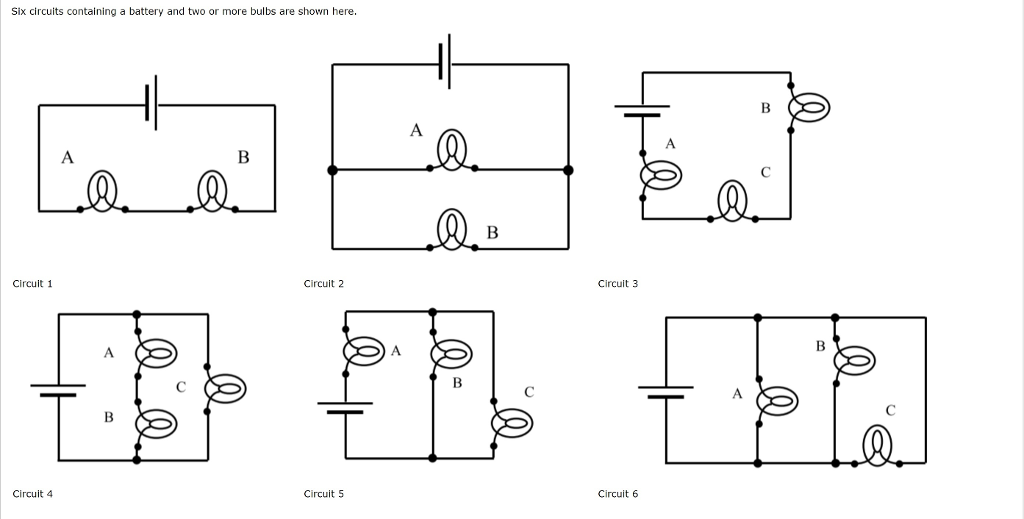Mood Brightener: ...more from Stay Homas. (Confination XII)
Your Conceptual Goals for this section: Circuit Concepts
Deeper into Bulbs:
Here are the core ideas from the previous discussion:
Current is the same at every point along an individual branch. Where multiple wires come together the current will divide or recombine. Charge is not 'eaten'!
More potential difference (steeper energy hill) across a load leads to more current flowing.
All the voltage drops occur across loads and not across wires.
Greater resistance means less current flow all other things being equal.
Higher watt bulbs have less resistance and allow more current to flow.
A Process for Applying These Concepts:
i: Sketch/label the currents flowing from the battery through all branches of the circuit. As you do so apply our first concept that the current remains the same unless there is a junction in the circuit where the current has a choice of paths.
At this point see if there are reasons to rank some currents as greater than others based only on the branching of the circuit. Don't worry about resistance yet.
ii: The charges leave the battery with some amount of potential (energy) defined by the battery potential and have none left when they return. For this step identify as best you can the amount of energy 'on board' the charges at different points in the circuit. Look for the paths of individual charges to decide whether they have to divide up their energy among different loads or leave it all in one place.
Again, consider the impact of the potential difference on the current flowing through identical loads. Which currents must be the same and which are bigger or smaller.
iii: Check for internal consistency. Do the currents at a particular junction add up appropriately? Do loads with a greater potential difference have more current?
iv: The current times the voltage (P = I*ΔV) defines the brightness. Can you rank the bulbs at this point?
v: Note how much current is being drawn from the battery. Will this lead to the battery 'running out' faster or slower than our single bulb reference circuit?
Here are some slightly more complex bulb circuits to practice this process on:

We've done circuits 1 and 2 previously. Here's how I apply this model to Circuit 4.
Now I'm going to ask you to go try this process with Circuit 5 above. The ulimate goal is to have a ranking of the brightness of the three bulbs A,B, and C. If you have some extra time consider how A,B, and C in Circuit 5 compare to A,B, and C in Circuit 4.
[Class discussion]
Here are some more circuits to practice with...We'll pick one to try (not d!).

...and finally, if we have time, on of these (not VIII!).

Assignment Breadcrumb Reading: Bb Assignment
Potential Difference and Current:
I have asserted that there is a relationship between the potential difference (energy delivered) across a load and the current through that load. Shortly we will call this Ohm's Law but for now it's just a concept. In a short paragraph describe for me how you make sense of this in term of our conceptual model.
Before Next Class:
Assignment HW: Bb Test
Circuit (d) Bulb Brightness:
Rank the bulbs in Circuit (d) in order of brightness from greatest to least. i.e. A > B > C=D. If two bulbs are the same then there will be an equal sign clearly:)
Assignment HW: Bb Test
Circuit VIII Bulb Brightness:
Rank the bulbs in Circuit VIII in order of brightness from greatest to least before and after the switch is opened.
Looking Ahead:Look ahead to the next Breadcrumb: Kirchoff's Laws
Assignment Breadcrumb Reading: Bb Test
Ohm's Law:
Given a load with a resistance of 200 Ohms and a current of 20 mA what is the voltage drop aross this load if it is an Ohmic device?
